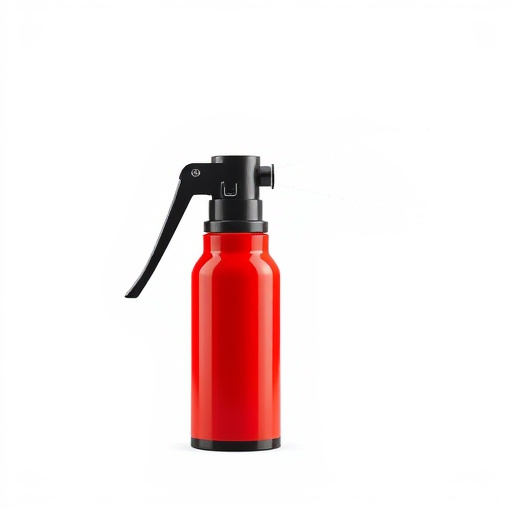Bear spray and personal pepper spray differ in composition, effectiveness, range, and environmental resistance. Bear spray uses oleoresin capsicum (OC) for broader deterrence against bears (4-7m range), while personal pepper spray employs capsaicin for targeted self-defense (2m range). Bear spray has a wider nozzle, suitable for outdoor areas; personal pepper spray offers better control and precision in close quarters. Legal regulations vary, with bear spray generally less restricted but personal pepper spray more regulated due to misuse potential. Choose based on needs: bear spray for wildlife encounters or personal pepper spray for urban/indoor use.
“Discover the power of self-defense with Oleoresin Capsicum (OC) spray, a game-changer in personal safety tools. This article delves into the intricate world of OC spray, offering a comprehensive guide for users seeking protection from bears and other threats. We explore the differences between bear spray and personal pepper spray, examining their compositions, effectiveness, safety features, and legal considerations. By understanding these nuances, you’ll make an informed choice for your specific needs.”
- Understanding Bear Spray: Composition and Effectiveness
- Personal Pepper Spray: A Closer Look at Active Ingredients
- Comparing Safety Features and User Experience
- Legal Considerations and Best Use Cases for Each
Understanding Bear Spray: Composition and Effectiveness
Bear spray, a specialized defense tool, differs significantly from traditional personal pepper spray in both composition and effectiveness. While regular pepper spray uses capsaicin to induce temporary blindness and immobilization, bear spray incorporates oleoresin capsicum (OC), a more potent form of capsaicin mixed with other natural ingredients. This unique blend enhances its ability to deter aggressive bears, making it specifically designed for outdoor enthusiasts navigating bear-inhabited areas.
The composition of bear spray allows for a longer effective range, typically between 4 to 7 meters, compared to personal pepper spray’s closer range of around 2 meters. This increased reach offers users more time to retreat or deter an attacking bear. Moreover, the specific formulation of OC in bear spray is known to be more resistant to wind and rain, ensuring its potency remains intact even in challenging environmental conditions, providing a reliable layer of protection during outdoor activities in bear country.
Personal Pepper Spray: A Closer Look at Active Ingredients
Personal pepper spray is a popular self-defense tool designed for individuals seeking protection in various situations. Unlike bear spray, which is formulated to deter larger animals, personal pepper spray targets smaller, more agile assailants. The key active ingredient in most personal pepper sprays is capsaicin, the compound responsible for the heat and irritation associated with chili peppers. This chemical irritates the eyes, nose, and respiratory system of a potential attacker, temporarily disorienting them and providing the user with an escape opportunity.
When comparing personal pepper spray to bear spray, it’s important to note their distinct purposes. Bear spray is designed for outdoor activities and encounters with bears or other large wildlife, using a stronger formula to create a larger area of effect. In contrast, personal pepper spray focuses on close-range self-defense scenarios, offering a more targeted but still potent dose of capsaicin. Understanding the active ingredients and their effects allows users to choose the most suitable defense tool for their specific needs and environments.
Comparing Safety Features and User Experience
When comparing bear spray and personal pepper spray, safety features and user experience are key factors to consider. Bear spray is designed for outdoor adventures, particularly in areas with bears, and its primary purpose is to create a barrier between the user and the animal. It’s effective at a longer range (up to 20 feet) and can deter bears effectively, but it lacks precision targeting, which means it might not always hit the intended aggressor. On the other hand, personal pepper spray is optimized for close-quarters self-defense scenarios, offering better control and accuracy due to its shorter effective range (typically up to 4 feet). This makes it more suitable for urban settings or indoor situations where quick reflexes and precise application are crucial.
In terms of user experience, bear spray typically has a wider nozzle for better coverage but may require a stronger gust of wind to be effective. Pepper spray, with its finer mist or stream setting, allows users to aim directly at the assailant’s face, eyes, and nose, enabling quicker disorientation. Bear spray is often recommended for individuals who spend significant time in bear country, while personal pepper spray is a preferred choice for self-defense enthusiasts, law enforcement officers, and anyone looking for an effective yet easily manageable defense tool in close quarters.
Legal Considerations and Best Use Cases for Each
When considering a self-defense tool like oleoresin capsicum (OC) spray, understanding legal considerations and optimal use cases is paramount. In many jurisdictions, both bear spray and personal pepper spray are regulated differently. Bear spray, designed to deter aggressive bears, is typically allowed in areas where wildlife encounters are common, often with less stringent restrictions compared to personal pepper spray. The latter is usually subject to more rigorous regulations due to its potential for misuse.
The best use cases for OC spray depend on the individual’s needs and local laws. For outdoor enthusiasts and those living in remote areas prone to bear encounters, bear spray offers a reliable means of protection. In urban settings or situations involving personal safety from humans, personal pepper spray is more suitable. Users should always stay informed about local regulations and consider factors like range, ease of use, and refillability when choosing between bear spray vs. personal pepper spray.
When choosing between bear spray and personal pepper spray, understanding their unique compositions and applications is key. Bear spray, with its wide range and powerful effects, is ideal for outdoor enthusiasts facing large predators. Conversely, personal pepper spray focuses on delivering a strong irritant for self-defense against smaller threats. Both have legal considerations, but pepper spray generally faces less restrictive regulations. Ultimately, the best choice depends on your specific needs and the context in which you’ll use it.
